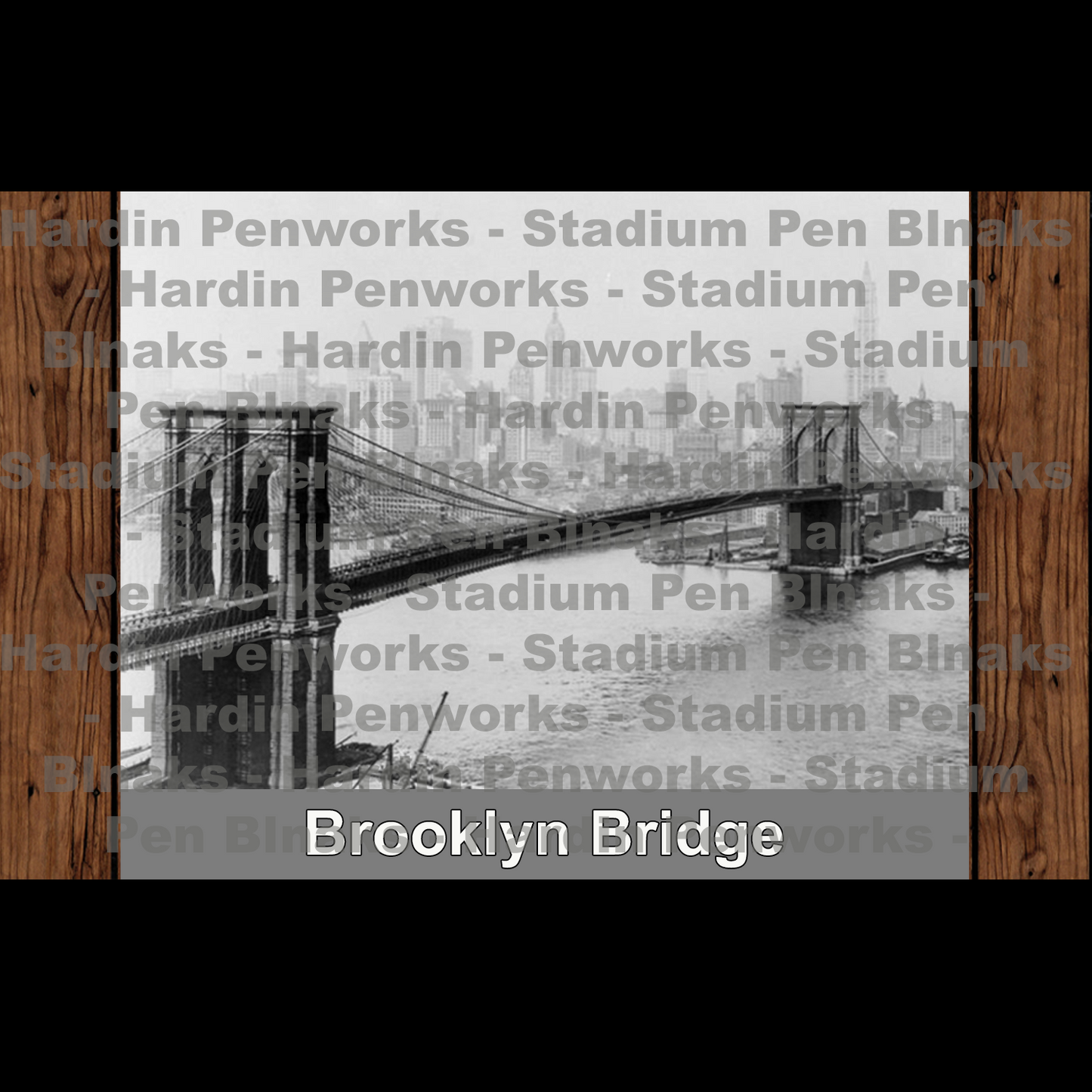Brooklyn Bridge
Brooklyn Bridge
5.0 / 5.0
(1) 1 total reviews
Prodcut Base price with no add-on options
In stock
Product Price with any add-on options selected
Couldn't load pickup availability
Brooklyn Bridge embedded wood blanks
Sierra Clone - 27/64" Blanks
JR Set - 12.5mm Label Cap & Wood Lower blank
_____________________________________________________________________________________________
All blanks will come with one COA per blank. COAs are 4" x 6" card stock with silver foil embossed COA seal._____________________________________________________________________________________________
Out of Stock items can be ordered as more blanks will be made. Expect approximately two week turn around on out of stock items.
The Brooklyn Bridge is a hybrid cable-stayed/suspension bridge in New York City, spanning the East River between the boroughs of Manhattan and Brooklyn. Opened on May 24, 1883, the Brooklyn Bridge was the first fixed crossing across the East River. It was also the longest suspension bridge in the world at the time, with a main span of 1,595.5 feet (486.3 m) and a deck height of 127 ft (38.7 m) above mean high water. The span was originally called the New York and Brooklyn Bridge or the East River Bridge but was officially renamed the Brooklyn Bridge in 1915.
The Brooklyn Bridge has an elevated promenade open to pedestrians and cyclists in the center of the bridge, located 18 feet (5.5 m) above the automobile lanes. The promenade is usually located 4 feet (1.2 m) below the height of the girders, except at the approach ramps leading to each tower's balcony.[28] The path is generally 10 to 17 feet (3.0 to 5.2 m) wide, though this is constrained by obstacles such as protruding cables, benches, and stairways, which create "pinch points" at certain locations. The path narrows to 10 feet (3.0 m) at the locations where the main cables descend to the level of the promenade. Further exacerbating the situation, these "pinch points" are some of the most popular places to take pictures. As a result, in 2016, the NYCDOT revealed plans to double the promenade's width.
A center line was painted to separate cyclists from pedestrians in 1971, creating one of the city's first dedicated bike lanes. Initially, the northern side of the promenade was used by pedestrians and the southern side by cyclists. In 2000, these were swapped, with cyclists taking the northern side and pedestrians taking the southern side.
Pedestrian and bicycle access to the bridge from the Brooklyn side is from either the median of Adams Street at its intersection with Tillary Street or a staircase near Prospect Street between Cadman Plaza East and West. In Manhattan, the pedestrian walkway is accessible from crosswalks at the intersection of the bridge and Centre Street, or through a staircase leading to Park Row.
Share



This is a great seller and a must have for a New Yorker


